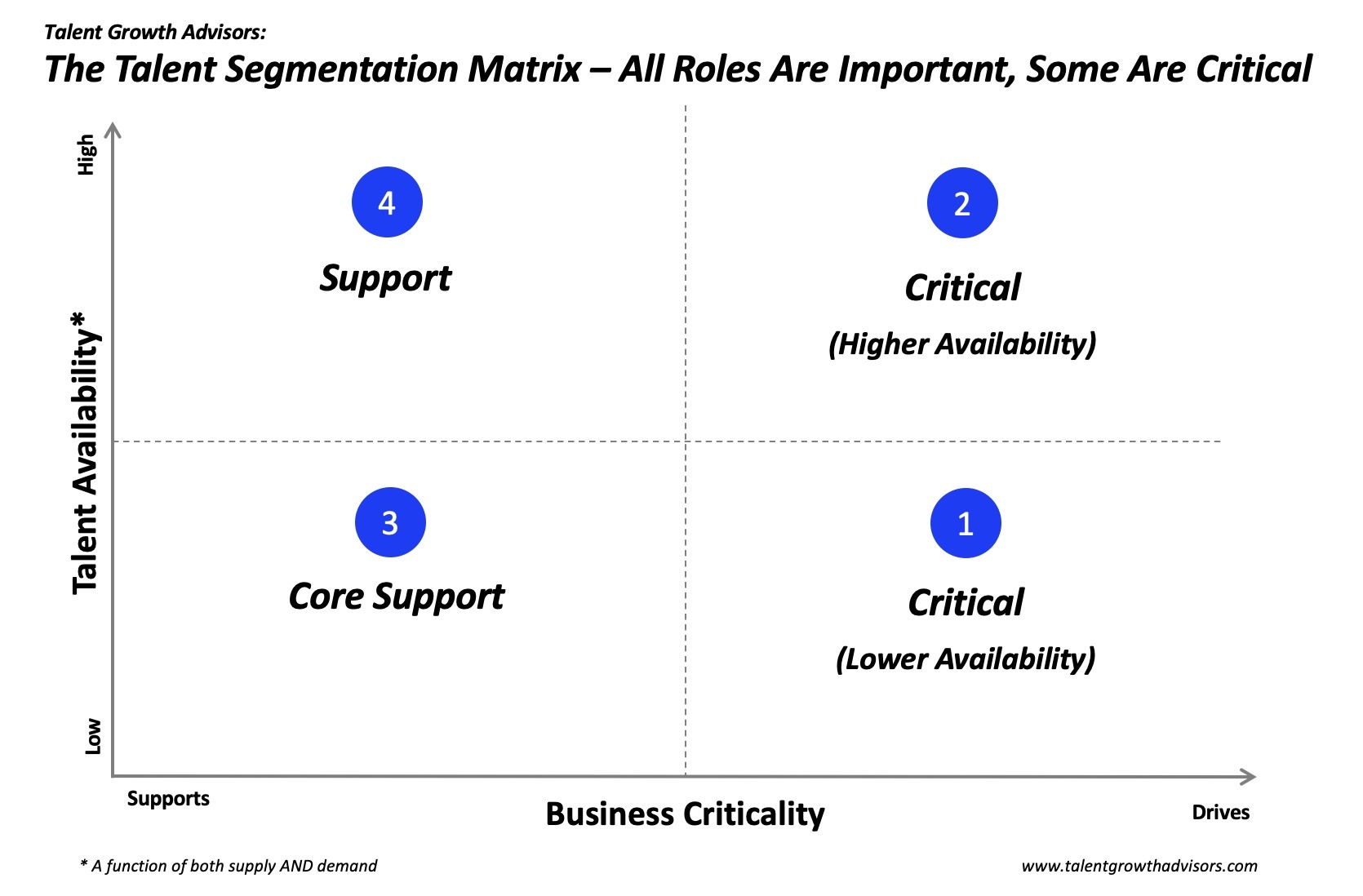Blog
When the Interview Isn’t the Real You: Why New Grads Are Struggling - and What Employers SHOULD Do
By Linda Brenner | September 29, 2025
In recent hiring cycles I’ve seen a pattern among clients and within my own circle of friends and family members that I can’t ignore: strong students and interns - smart, credentialed, often from top schools - are stumbling in interviews or...
The Most Important HR Operating Model Metrics
By Tom McGuire | July 02, 2025
The ability to execute HR talent initiatives is pointless without understanding what success looks like for the business and having the means to monitor progress and remediate short comings. The ubiquity of data in modern HR systems can easily...
Moderna Merged HR and IT. Smart Move — or Missed Opportunity?
By Linda Brenner | June 01, 2025
Recently, The Wall Street Journal reported that Moderna has merged its HR and IT departments under a single executive, creating a new role: Chief People and Digital Technology Officer. The move is meant to align workforce planning and technology...
The Hidden Cost of Outdated Recruiting: Why an Audit Pays Off
By Linda Brenner | May 20, 2025
In unpredictable times, even good companies make bad hires. You’re not alone if your organization is struggling to hire faster and more effectively right now. When uncertainty dominates the business landscape, and talent markets shift faster than...
The Scientific Talent Gold Rush No One Is Talking About — Yet
By Linda Brenner | April 28, 2025
In today’s chaotic job market, a once-in-a-generation opportunity is quietly unfolding — and almost no one is paying attention.
Employees Who Should Not Return to the Office – And the Cost of Forcing Them
By Linda Brenner | March 26, 2025
Many companies are pushing employees back to the office, but for knowledge workers—those responsible for creating intellectual capital like data, algorithms, and IP—this could be a costly mistake. These roles, which drive the majority of enterprise...
How TA Leaders Can Build Value . . . And Credibility
By Tom McGuire | March 10, 2025
Recruiting leaders are constantly asked to justify additional investments in their team, tools and technology. At the same time, they face increasing demands from hiring managers to handle their requisitions quicker and better than other openings in...
Five Ways to Influence Hiring Managers in the Recruitment Process
By Linda Brenner | March 05, 2025
Recruiters often complain that they struggle to get quality time with hiring managers and learn about their talent-related priorities in a proactive way. This is a legitimate complaint; if you can’t get time with a manager, how can you possibly be a...
The Most Important HR Metrics
By Tom McGuire | March 02, 2025
The holy grail of HR seems to be the ability to monetize the value of talent-related investments and efforts. And it's been hard to do in a way that's meaningful enough to catch the attention of the C-suite.
How to Attract Top Talent with Scarce Skills
By Tom McGuire | February 27, 2025
Most organizations have been taking the same approach to talent issues for many, many years. Consider hiring requisitions being handled in largely the same way, spreading limited training resources as thinly and evenly as possible, and treating...
Quality of Hire: Your Org's Top 10 Indicators
By Tom McGuire | February 24, 2025
What is "quality of hire"? Like "workforce planning", the words can stop a conversation in it's track. But neither should. Defining and measuring Quality of Hire (QoH) is a essential responsibility of any Talent Acquisition function. After all, if...
Strategic Workforce Planning: 7 Steps To Talent Acquisition Success
By Linda Brenner | February 21, 2025
There is hardly a more nebulous, misunderstood (and possibly hated) word in Human Resources than “strategic workforce planning”, but it is a critical key to successfully improving hiring and retention results. This article describes why it is important, how to do it, and what results you should see.
Are You an HR Pro Being Asked to Lead Talent Acquisition? 6 Tips for Success
By Linda Brenner | February 20, 2025
Check out this list of tips for new talent acquisition leaders - especially if you're coming from an HR Generalist role - to shorten your learning curve and drive meaningful results faster.
Talent Acquisition Org Design Best Practices
By Tom McGuire | February 17, 2025
What’s the best way for recruiting teams to think about tackling hiring requisitions? First in, first out – like milk? Nah, I don’t think so; but surprisingly, many succumb to this approach in the face of hiring manager pressure and the absence of business-based prioritization.
Leadership and the Knowledge Worker
By Tom McGuire | February 13, 2025
More than 80% of the share price (market value) of the average company today is created by its underlying intellectual capital – brands, patents, processes, strategic relationships, etc. The percentage of value created by intellectual capital (IC)...
Using Intellectual Capital to Valuate Companies: Algorithm in Action
By Tom McGuire | February 10, 2025
In today’s knowledge economy, Intellectual Capital (IC) is driving the market value of most companies. As we outlined in a previous post, IC is the product of human capital, or talent, and our proprietary algorithm calculates the value of IC for...
Measuring Quality of Hire: How to Handle Common Challenges
By Tom McGuire | February 06, 2025
No one would argue that the talent a company employs play in a crucial role in achieving organizational success. Given this fact then, why don’t more companies measure the quality of their talent?
Five Reasons Why Candidates Aren’t Applying to Your Jobs
By Linda Brenner | February 06, 2025
There are many reasons why candidates aren't applying to jobs the way they did before the pandemic. A recent survey identified five key reasons for this (hint: 'being lazy and on unemployment' didn't make the list.)
Recruiting Process Outsourcing (RPO) Can Improve Hiring Results: Four Ways to Do It right
By Tom McGuire | February 02, 2025
Recruiting Process Outsourcing firms (RPOs) often have a reputation for overpromising and under-delivering, but does it have to be that way?
RPO Lessons Learned: When RPO is Not Working Well
By Tom McGuire | January 29, 2025
So your organization is using an RPO (Recruitment Process Outsourcing) firm and you suspect things aren't going as planned? Or perhaps you are considering an RPO? Read on to learn about these common pitfalls. And check out other articles in our series to find solutions.

Subscribe to our Newsletter:
Get curated, current, talent news and best practices delivered to your in-box regularly
Learn More
Why Your HR Strategy Should Be All About Build, Buy, Borrow
Read ThisOur Bloggers

Linda Brenner
Linda is an industry vet with keen observations and a knack for calling it like it is.

Tom McGuire
Tom brings the unlikely blend of Finance & HR to the practice, illuminating readers with the link between talent and business value.


















.png)